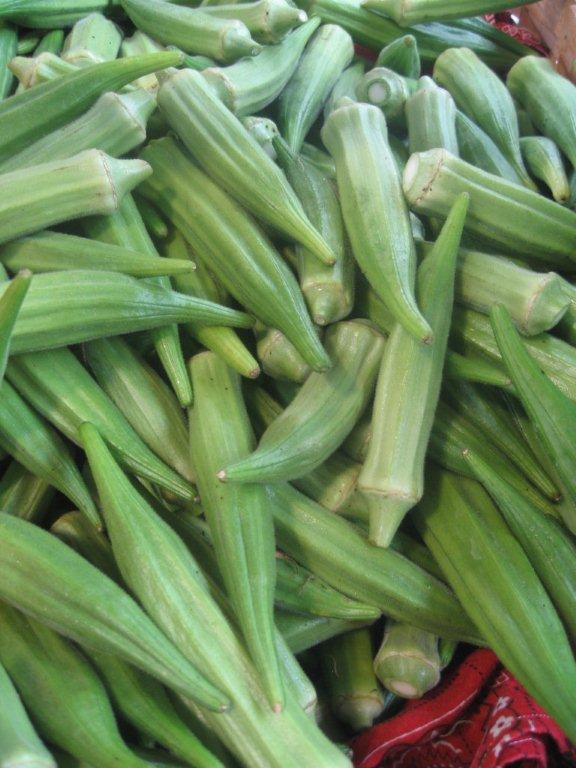
Okra
Okra is an incredibly popular vegetable in the Southern United States. Okra is a unique vegetable with a distinct flavor that falls somewhere between that of eggplant and asparagus. Okra is a podded vegetable with a fibrous outer stem and many inner seeds that grows on shorter bushes. It is commonly bright green, or sometimes purple, with a short stem.
Best Storage Practices:
Okra should be kept in cool refrigeration (45-50 degrees F), wrapped in a plastic bag to protect the vegetable. Okra has a short lifetime if not frozen for long-term keeping, and properly stored okra should last 2-3 days.
Fun Ways to Eat and Cook:
Young, immature okra (shorter than 4 inch pods) are edible raw, but once matured the vegetable becomes too tough and fibrous to eat raw and should be cooked. When cooking, steam, boil, or stir-fry. Okra combines great with other vegetables in stews.
Selecting Okra:
Select only okra that is bright green, firm, and crisp. Avoid any okra with damaged pods, discoloration, or limp pods.
Why it’s Good to Eat:
- Great source of dietary fiber
- Good source of Vitamin B6 and folic acid
- Good source of a variety of other nutrients
When it’s in Season:
Okra is a warm weather vegetable and is planted in mid to late spring. Okra is available beginning in June and can be found in markets until September.
How it’s Harvested:
Okra is harvested off the bush by hand, often by snapping the pod or with the assistance of a knife. Okra is harvested when pods are between 2 ½ and 5 inches long. The smaller the pod, the more tender it is.
Recipes:
Okra Salsa—Dice okra, tomatoes, peppers, onions, and corn. (For Warm Salsa steam with water). Drizzle with oil, salt, pepper, and cilantro.
